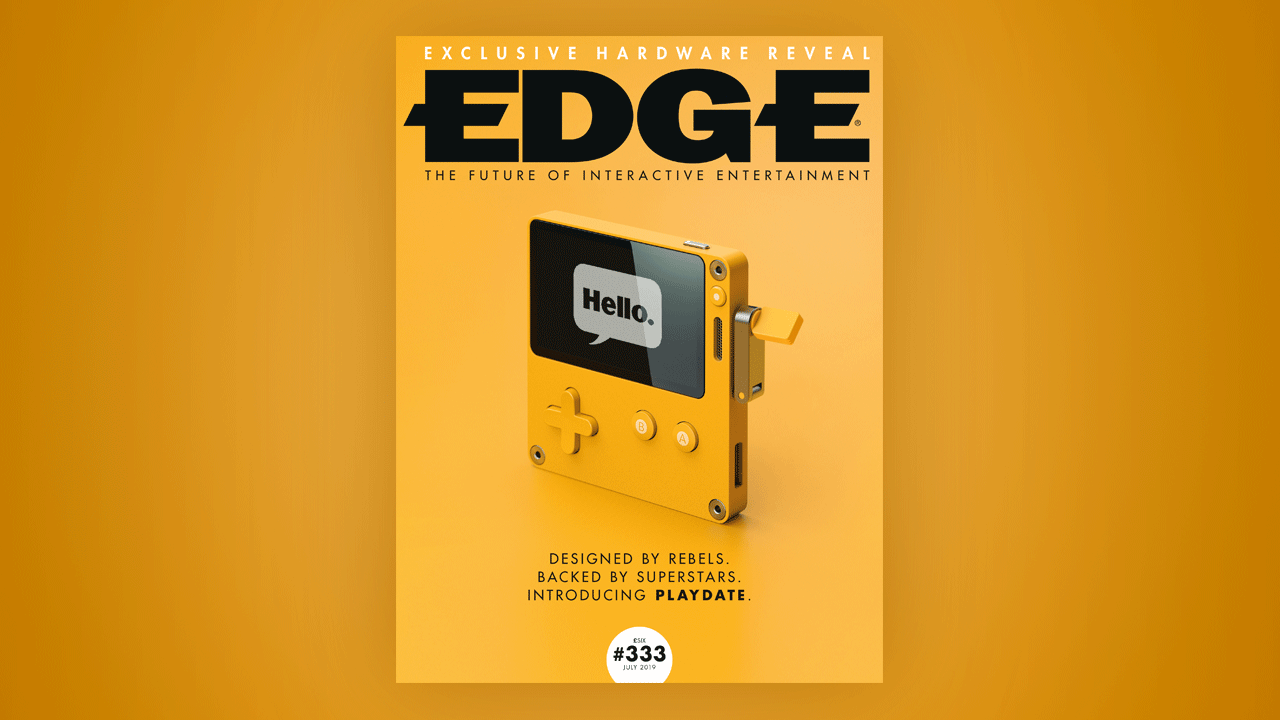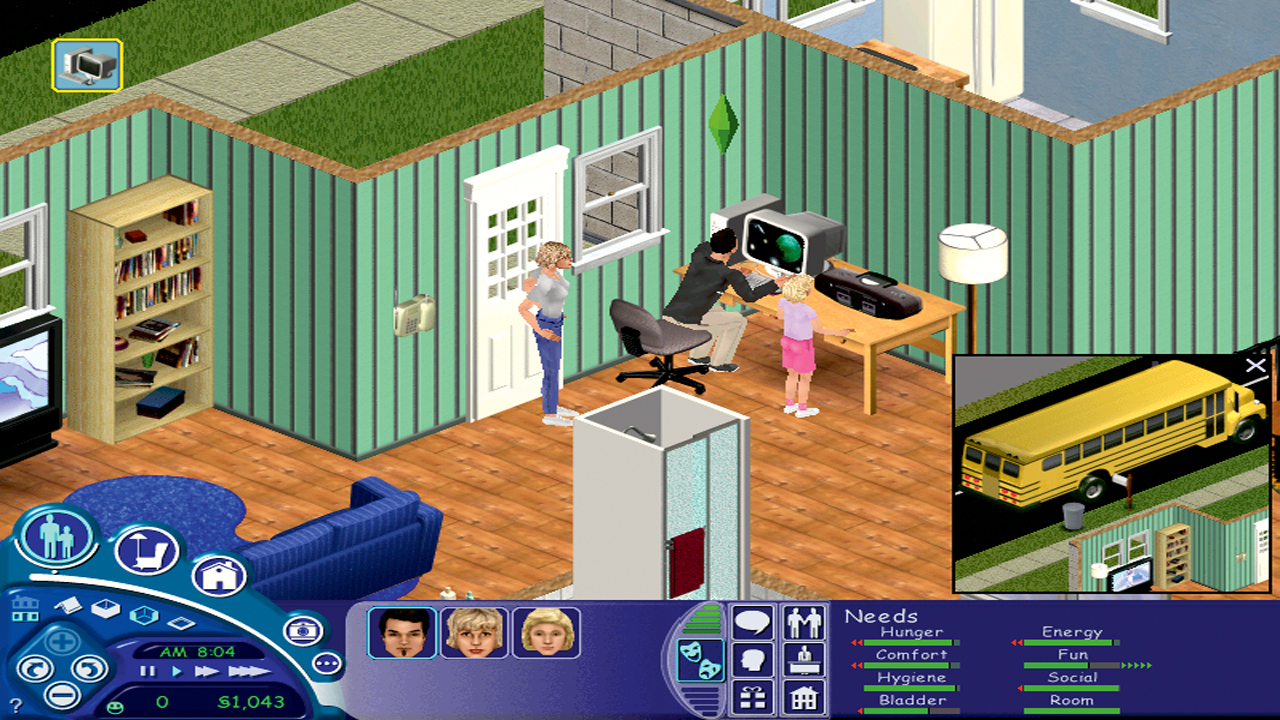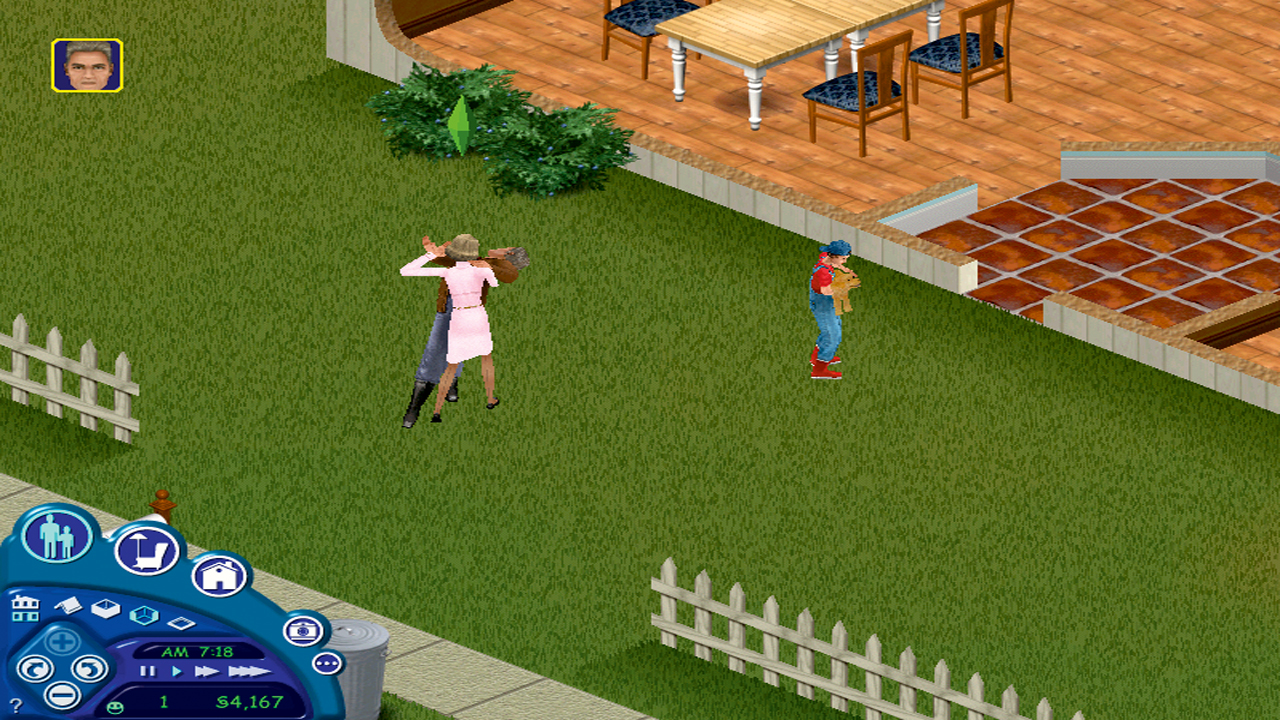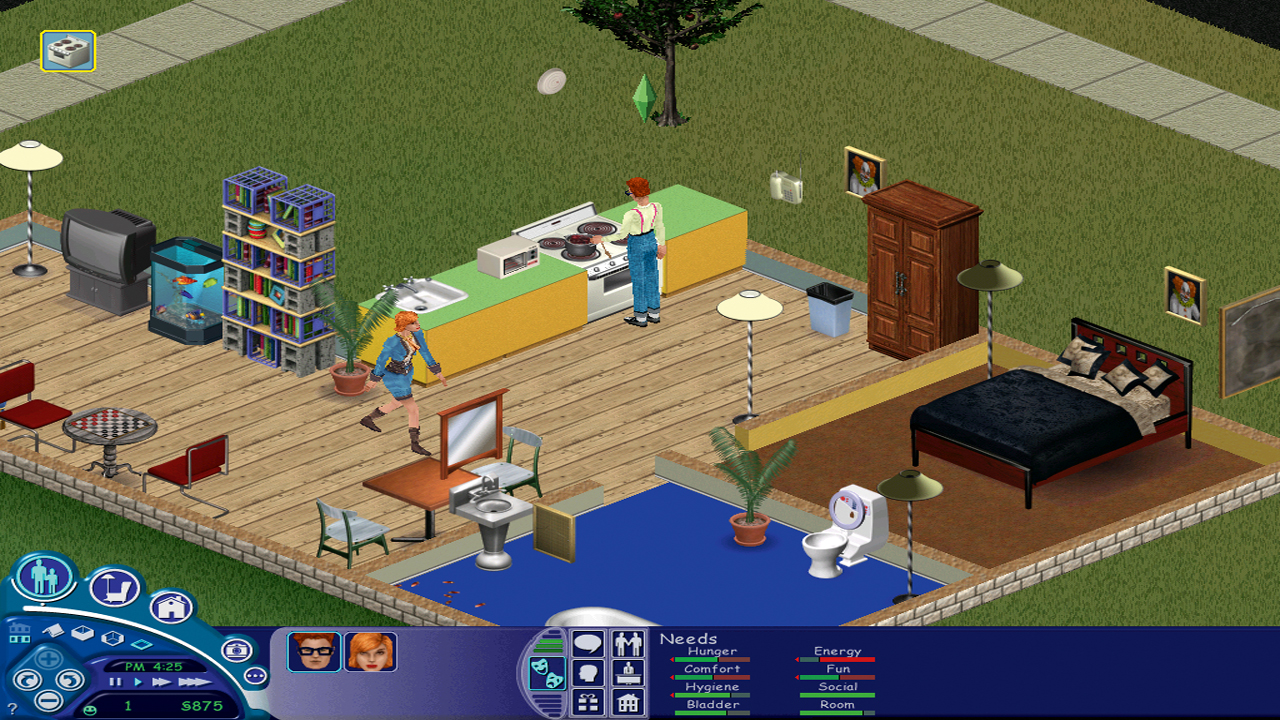In The Sims, Maxis created an iconic living snapshot of '90s America
The Sims turns 20: After Will Wright lost his house to a wildfire, he was inspired to turn players into a a god-king of suburbia

The Oakland, California fire storm of 1991 raged for two days across 1,520 acres and destroyed over 3,000 homes. One belonged to Will Wright. In the weeks and months that followed, the SimCity creator involved himself with rebuilding his house, learning the fundamental principles of architecture and asking himself which components of the home were essential, and which could be bought later on.
The experience gave Wright an idea for a new game. After the release of SimEarth and SimAnt in 1990 and 1991, two titles with plenty of imagination which failed to eclipse the success of SimCity, Wright had three projects on his mind. Project Z would be a simulation of the ill-fated Hindenburg airship which would – mercifully – never enter production. Project Y would eventually become SimCopter. And Project X, drawing on Wright's experiences in architecture and home design, would become the bestselling PC game ever released.

This feature first appeared in Edge Magazine. If you want more great long-form games journalism like this every month, delivered straight to your doorstop or your inbox, why not subscribe to Edge here.
Not that The Sims bore any obvious marks of genius in its early stages. Initially it tasked the player only with architectural input, challenging them to build functional and aesthetically pleasant homes and drawing inspiration from Christopher Alexander's book A Pattern Language which presented a 'function over form' argument in interior design. Once the homes were built, AI-driven characters would enter and examine them, awarding a score based on the player's architectural prowess. A prototype was developed under the name Home Tactics: An Experimental Domestic Simulator. Everybody, more or less, hated it.
That included the marketing people at Maxis, who had not been reading A Pattern Language in their spare time nor rebuilding their homes. They didn't understand the merit or enjoyment in arranging walls and furniture and letting little computer people judge the results. Focus groups, too, hated it. Whatever magnetic pull The Sims would eventually have on gaming audiences in its final form, it wasn't present in 1993 when the earliest prototype was put before members of the public. In an alternate universe, that might have been the end of the story for Will Wright's odd little idea for a dollhouse game.
Its fortunes changed when Electronic Arts bought Maxis in 1997, and Luc Barthelet was appointed general manager at Maxis. Barthelet recognised the huge potential in Wright's idea, and was buoyed by a crucial repositioning the internal team had made with the game in the interim. In their efforts to design an AI that could navigate homes easily and interact with objects wherever they were placed, Wright's team inadvertently shifted the focus of the game. It wasn't simply about building homes, they realised, but about watching people live in them.
You've got to have character

With the focus now shifted onto the characters, Wright once again drew on academic theory to establish their behaviour, just as he had with architecture. Sim behaviour is founded upon Maslow's hierarchy of needs, an influential 1943 psychological theory of human motivation. Arranged in a pyramid, it places physiological needs such as food, water, warmth and rest at the bottom and then ascends through safety needs, a sense of belonging and love, esteem, and finally self-actualisation at the top of the triangle. Only when someone has met the most basic needs, Maslow argued, can they move onto those higher up the pyramid. Using that model of human motivation, the Sim's eight needs bars were born, encapsulating the spectrum of the human condition with almost infuriating accuracy and simplicity.
As The Sims took on the form we now recognise, having gestated throughout most of the 1990s, it attracted a lot of buzz. Maxis employees staffing a modest station at E3 1999 to show off the game watched a line form and grow bigger and bigger, snaking through other exhibitors' stations, until they could no longer see the end of it. People were fascinated by what might happen if you made a Sim do this, or that, or kiss another Sim. The element it had been lacking for years previously – an immediately understandable imperative – it now had to an unprecedented degree. The Sims offered the chance to have pet people.
Weekly digests, tales from the communities you love, and more


Creator Will Wright reflects on the making of The Sims, on the battle he waged internally to get one of the most important games of all time through production
Such was The Sims' success – one million copies sold in its first month, shortly after that becoming the bestselling PC game to date in 2000 – that it became part of pop culture. Its appeal was much broader than the traditional gaming audience, and marketers found that the parents and sisters of the teenage boys they'd been aiming their messaging at for years were now just as engaged with their IP. As a result, The Sims played a part in defining life at that specific point in time – first, because the subject matter depicted it, and second, because everyone spent so much of their actual lives playing it.
And what a specific point in time it was. Released February 4, 2000, it met the world just as it was discovering the Internet, but before it changed everything about the way we live our lives. It's become an accidental document of life before online shopping, smartphones or selfies, when people looked for jobs in newspapers and the jobs within them involved uniforms and workplaces. Depending on just how misanthropic your worldview may be, The Sims is a preserved slice of life before the untimely fall of western civilisation.
Understanding modern life

Play it now and you'll marvel at the assumptions about aspirational 'modern' life The Sims makes which might have been true at the time but seem quaintly anachronistic now. That an enormous stereo system represents the zenith of material gain, for example, or that Frasier Crane's apartment is the be-all and end-all in interior decor. It's striking just how prevalent music is in the world of The Sims, how it's the pillar of every social event. Even the Newbies, who apparently can't afford to dress themselves in anything but rags, have a stereo system on the table of their barebones bungalow.
There are ideological assumptions suggested here, too. The most obvious is that material gain is the most important endeavour in life. Sims are able to forge relationships, marry, and have children, but that represents a small part of the game content compared with the multiple career paths and stacks of consumer goods available for purchase. Often, social interactions presented as nothing more than a means to financial progression: make two new friends to achieve a promotion, or go to work with your social bar replenished. We're shown the benefit of socialising to further a Sim's career, but never given a social reward for succeeding professionally. In fact, your neighbours might even stop by to poke fun at your furniture if you don't get ahead financially.
Criticism of an increasingly consumerist society was a hot topic at the turn of the millennium, and some players at the time interpreted The Sims as a comment on capitalism and the American Dream. Were these ostensibly innocent little people actually telling us something about the shallowness of our lives? According to Wright, they were not. The Sims' atmosphere of almost oppressive Americana, conveyed in everything from the white picket-fenced streets of its suburbs to the mid-century shopping-commercial music in Buy mode, was just a way to make the world make sense for audiences in 14 different language territories, the creator explained. Wright called it "American Television Culture," a kind of hyper-real vision of '90s America that anyone who'd seen Friends, Seinfeld, Frasier or the like would immediately grasp. Whatever the intentions at the time, the effect of living inside American Television Culture for a few hours in 2019 is akin to watching an Adam Curtis documentary.

"It's striking just how prevalent music is in the world of The Sims, how it's the pillar of every social event"
In another bid to make The Sims appeal to international audiences, Maxis developed a fictional language, Simlish. After initially experimenting with fractured Ukranian (also the basis for the slang used by the teenage monsters in A Clockwork Orange), Fijian and Tagalog, Wright's team decided that having Sims speak in nonsense made more sense than having them say anything meaningful in an obscure language. An effect that's perhaps accidental is that Simlish deepens the feeling of voyeurism as you play The Sims. It keeps you at arm's length from your pets, however involved you might be in the minutiae of their lives. You understand the gestures and intonations as they communicate with each other, and occasionally imploringly to you. But you're never there with them, instead watching from a distance as a kind of foreign visitor.
The Sims' legacy might have gone in any number of directions. In the aftermath of its chart-topping success in 2000, it seemed inevitable that the industry would be overrun by imitators. But approximating something as all-encompassing as The Sims proved all but impossible, and as Maxis retained the monopoly on modern life simulators it began flooding the market all on its own, with expansion packs promising new activities and items. These proved as commercially successful as they did controversial, with some looking harshly on such aggressive monetisation of content aimed, at least in part, at a young audience.
Perhaps it's the proliferation of those expansion packs that diminishes The Sims' reputation. Seven for the first Sims game, eight for its sequel, an unquantifiable flood of additional paid content for later games, but all the while the fundamental experience remained basically unchanged. Maslow's hierarchy of needs, A Pattern Language, and the player as god-king of suburbia.

Subscribe to Edge Magazine for only $9 for three digital issues and show your support for long-form game journalism
Phil Iwaniuk is a multi-faceted journalist, video producer, presenter, and reviewer. Specialising in PC hardware and gaming, he's written for publications including PCGamesN, PC Gamer, GamesRadar, The Guardian, Tom's Hardware, TechRadar, Eurogamer, Trusted Reviews, VG247, Yallo, IGN, and Rolling Stone, among others.



